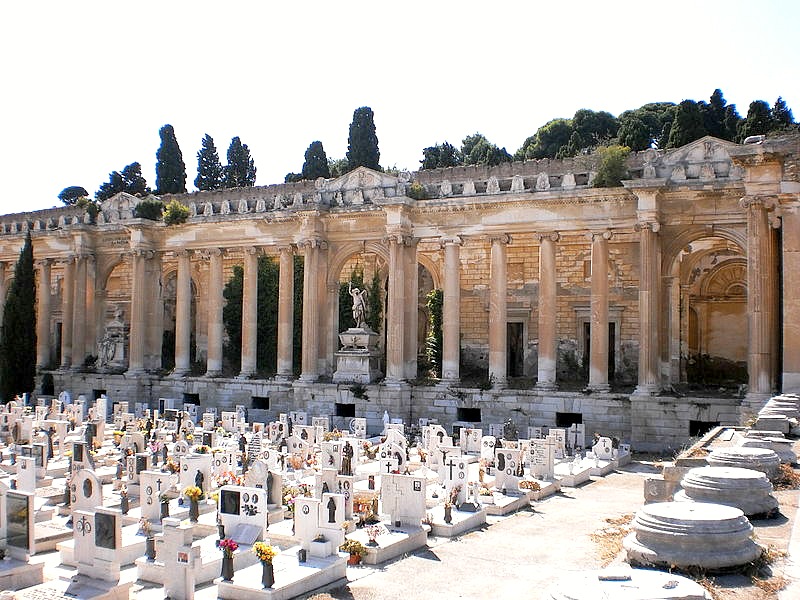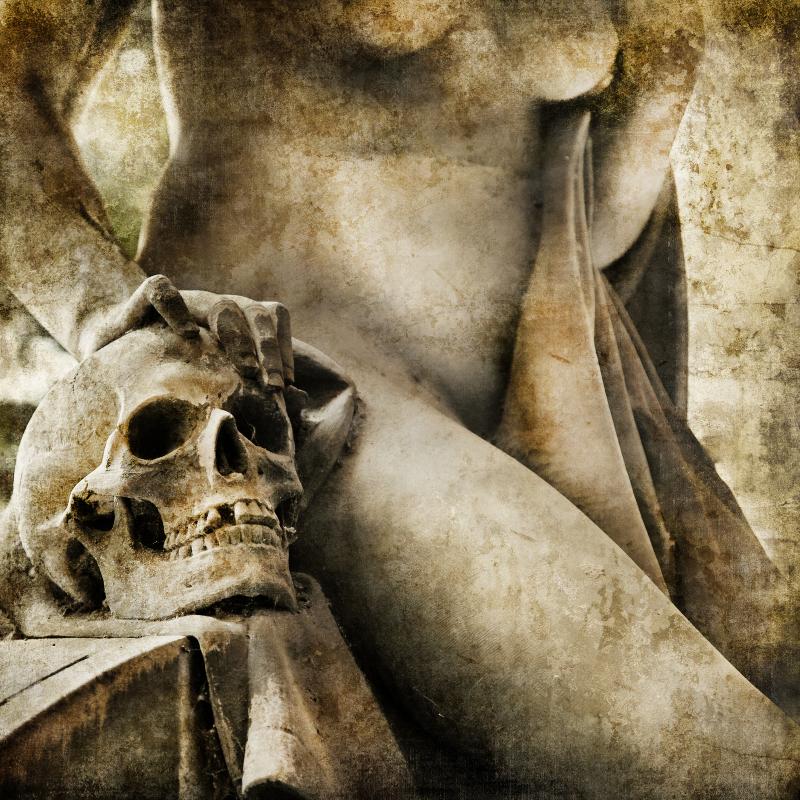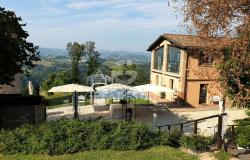The 1st of November is a national holiday in Italy, known as Tutti i Santi or Ognissanti, which celebrates all saints and is followed by All Souls Day on the 2nd of November, a day devoted to honor loved ones who have passed away by going to the cemetery to pray, bringing candles and flowers to their tombs. The standard cemetery in most Italian towns and villages is a walled enclosure on the outskirts of cities and towns owned by the local council rather than the church. While in the past dead people were buried in several different ways, Napoleon introduced the current practise of urban cemeteries with the 1804 Edict of Saint-Cloud which forbade burials in churches and towns.
Today, most Italian cemeteries consist mainly of multi-storey rows of concrete vaults, a practice echoing those of the ancient Etruscans and early Christians, sealed with a marble plaque with a small photo of the inhabitant in life. However, over the years, many people commissioned architects and artists to design special chapels and tombs for them, so many Italian cemeteries have now become open-air museums of funerary art and are known as Cimiteri Monumentali (Monumental Cemeteries) and are often mentioned on tourists guides as interesting locations to visit like the ones in Père-Lachaise cemetery in Paris or Saint Louis in New Orleans.
From Liguria to Sicily, we look at the top 10 monumental cemeteries in Italy that are worth a visit.
Monumental Cemetery of Staglieno

The Cimitero monumentale di Staglieno in Genoa, Liguria, is located on a hillside in the district of Staglieno and is famous for its monumental sculptures. Covering an area of more than a square kilometre, it is one of the largest cemeteries in Europe. The original project was approved in 1835 by the City's architect Carlo Barabino. However, he died the same year as a result of the cholera epidemic that struck the city and the project passed to his assistant and pupil Giovanni Battista Resasco. Work began in 1844 and it was opened on 2 January 1851. At the time Genoa was a major centre of learning within Italy and attracted reformists and an affluent bourgeoisie. Wishing to place long-lasting memorials to remember their work and moral accomplishments, they developed a tradition of funerary art, realistic sculptures in particular, to be placed on their tombs. The cemetery contains the tombs of Oscar Wilde's wife Constance Lloyd, Ferruccio Parri, Fabrizio De André, Nino Bixio, and Giuseppe Mazzini.
Cimitero Monumentale di Milano

Milan Monumental Cemetery is one of the two largest cemeteries in Milan, the other one being the Cimitero Maggiore. It was designed by architect Carlo Maciachini with the aim to consolidate a number of small Many of the graves have been designed by renown artists such as Giò Ponti, Arturo Martini, Lucio Fontana, Medardo Rosso,Giacomo Manzù, Floriano Bodini, and Giò Pomodoro. The main entrance is through the large Famedio, a massive Hall-of-Fame-like Neo-Medieval style building made of marble and stone that contains the tombs of some of the city's and the country's most honored citizens, including that of novelist Alessandro Manzoni. The cemetery has a special section for those who do not belong to the Catholic religion, and a Jewish section. Near the entrance you can find an exhibit of prints, photographs and maps outlining its historical development. The cemetery contains the tombs of important musicians Corelli, Verdi, Toscanini and Gaber.
Cimitero Monumentale della Certosa di Ferrara

The Monumental Cemetery of the Certosa in Ferrara, in Emilia Romagna, is currently located within the walls of the city of Ferrara. The complex (which includes the Church of San Cristoforo alla Certosa) was originally founded as a Carthusian monastery in 1452, and at the time stood, as usual, outside the walls of the city. After the monastery was closed during the Napoleonic rule, the complex was purchased by the city of Ferrara and transformed into a city cemetery in 1813.
Cimitero Monumentale della Misericordia - Antella

The Cemetery of Antella, in Bagno a Ripoli, in Tuscany, was originally built between 1855 and 1856 with a project by Giovacchino Callai and consisted of three chapels dedicated to St. Joseph, San Sebastian and St. Tobias with a portico. It was later expanded and between 1906 and 1946 Galileo Chini built the dome and underway of the central arch at the entrance to the cemetery. During the time when Florence was the capital of Italy (1865-1870), the cemetery attracted the interest of the Florentine nobility, which built several chapels. Many artists worked for busts, bas-reliefs, gravestones and medallions, but the most important art work is the stained-glass windows and ceramics made by the Chini family.
Cimitero monumentale di Perugia

The monumental cemetery of Perugia, in Umbria, is located in Via Enrico dal Pozzo, near the Templar church of San Bevignate. It was inaugurated in 1849 by the Archbishop Gioacchino Pecci, future Pope Leo XIII. The graves and chapels of important families from Perugia are true masterpieces of funerary art, especially, those built with Liberty (Art Nouveau) style. Of particular historical and architectural interest is the chapel Vitalucci by sculptor Romano Mignini forged as an Egyptian pyramid.
Cimitero monumentale della Certosa di Bologna

The Certosa di Bologna is a former Carthusian monastery (the Certosa di San Girolamo di Casara) in Bologna, Emilia Romagna, which was founded in 1334 and suppressed by Napoleon in 1797. In 1801 it became the city’s Monumental Cemetery which would be much praised by Byron and others. The Certosa is located just outside the walls of the city at the foot of the Monte della Guardia and the Sanctuary of the Madonna di San Luca. The passion of the local nobility and aristocracy for monumental family tombs transformed the Certosa in an open air museum, a stage of the Italian grand tour: it was visited by Byron, Dickens, Theodor Mommsen, and Stendhal.
Cimitero monumentale di Caltagirone

The monumental cemetery of Caltagirone, in Sicily, was built in the second half of the 1800s and was officially recognised as a national monument in 1931. The complex, built in the Gothic-Sicilian style, has a square plan with a Greek cross made up of 170 arches that form its four main streets. The architect, Giovan Battista Nicastro, used readily available materials in Sicily, like the white stone from the Ragusa area, lava stone from the Etna and the local terracotta and ceramic. The cemetery has interesting paintings, sculptures, friezes and capitals with several chapels designed by the architect Xavier Fragapane in Liberty (Art Nouveau) style.
Cimitero Monumentale di Messina

The Monumental Cemetery of Messina, in Sicily, is one of the most important monumental cemeteries in Italy and, after the Staglieno cemetery, the richest in funerary art. It is located near the city centre and expands over twenty-two hectares of land. In 1854, at the time a serious outbreak of cholera scourged Messina and other parts of Sicily, the city council invited architects and town planners from the Kingdom of the Two Sicilies to present a project to develop a city cemetery and chose architect Leone Savoja's one. It was designed as a urban park and can be considered Messina's modern and contemporary open-air art gallery.
The neoclassical and art nouveau architecture of the cemetery is enriched by gardens. Cimitero Monumentale di Campo Verano in Rome The Campo Verano cemetery is located in the quartiere Tiburtino of Rome, near the Basilica of San Lorenzo fuori le mura and was founded in the early nineteenth century. The name verano refers to the Ancient Roman campo dei Verani that was located in the same area. The area contained ancient Christian catacombs. But a modern cemetery was not established till the Napoleonic Kingdom of Italy during 1807-1812, when the architect Giuseppe Valadier was commissioned the project. The cemetery is currently divided into sections: the Jewish cemetery, the Catholic cemetery, and the monument to the victims of the First World War. The papal authorities still have some control over the administration.
Cimitero Monumentale di Torino

The Monumental Cemetery of Turin - formerly known as General Cemetery - is the largest cemetery in the city of Turin, Piedmont. The old part of the cemetery is developed starting from the main entrance on Corso Novara, with an octagonal plan. Its construction was approved in 1827 to replace the small and ancient cemetery of St. Peter in Chains. It contains numerous historical tombs and a 12 km of porticoes adorned with sculptures of artistic interest.
Cimitero di San Michele

In Venice, Napoleon banned burials on the ‘mainland’ and, therefore, all bodies were rowed to the island of San Michele for interment. Today, it is all but full and sees few burials. Its lonely inhabitants are disturbed only by the arrival on a funereal black gondola of the select few who still have a family mausoleum here, the regular vaporetto bearing relatives come to maintain a loved one’s plot, and the cultured tourist, seeking the graves of Ezra Pound, Stravinsky and Diaghilev. San Michele also houses the deceased from the Greek and Protestant faiths (Jews are buried on the Lido).







